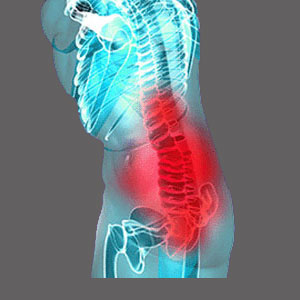
The symptoms of spinal stenosis can range from nonexistent to minor to debilitating. Most cases of mild to moderate spinal stenosis do not produce any pain or related neurological effects at all. This is because although the central canal or foraminal spaces are decreased in size, there is still plenty of room for the nerve structures to function normally. In essence, there is no compression occurring. However, when the stenosis becomes severe, then localized or widespread spinal stenosis symptoms may result and may become nightmarish for any affected patient.
This resource section details many of the possible symptomatic expressions of central canal stenosis. Individual article topics are provided below to expand on each possible symptom and how it relates to a stenotic causation.
Symptoms of Spinal Stenosis Explained
Below are listed some of the usual spinal stenosis symptoms experienced by patients with a range of central canal narrowing conditions:
Spinal stenosis tingling is described as a pins and needles feeling, usually experienced in combination with other neurological symptoms.
Spinal stenosis weakness occurs when areas of the body actually lose strength or are perceived to lose strength.
Spinal stenosis numbness can be subjective or objective, possibly helping to diagnose the root source of symptoms
Spinal stenosis foot drop is a very noticeable condition in which the patient can not raise their toes on one or both feet. This condition makes it very difficult to walk or do any physical activity with the legs.
Falling down from spinal stenosis is a common patient experience, particularly when the stenosis condition is severe or extreme.
Incontinence from spinal stenosis is one of the most dreaded of all symptomatic expressions and can also be one of the most socially restrictive.
Spinal stenosis flare ups are acute periods of pain which are likely to be recurrent in many affected patients.
Sciatica from spinal stenosis may often result from lumbar spinal stenosis, but can also occur due to cervical spinal stenosis, making diagnosis difficult.
Cauda equina syndrome from spinal stenosis is a terrible compressive neuropathy diagnosis which usually requires immediate surgical intervention to prevent permanent nerve damage from occurring.
Have you suffered a spinal stenosis relapse after successful treatment? We can explain why this has occurred.
Asymptomatic Versions of Stenosis
Asymptomatic spinal stenosis represents the majority of diagnosed patients with mild to moderate central canal and foraminal space narrowing conditions. Remember that just because the central canal or foraminal openings are decreased in size, for any reason, does not mean that symptoms will definitely result. Spinal stenosis is normal to experience as we age and most people with the physical indications of the condition will never develop any significant symptoms from the decreased canal space.
The epidemic incidence of misdiagnosed spinal stenosis helps to explain why so many patients can not find lasting relief from their symptoms, since the stenosis treatments used are not targeting the true underlying causative process.
Comments on the Symptoms of Spinal Stenosis
Diagnosing spinal stenosis of any variety by symptomatic expression alone is impossible. Diagnostic imaging is required and MRI scans are best for visualizing the interior of the spinal canal. Once images are returned, then symptomatic correlation can begin. In some cases, symptoms will be as expected for the structural conditions diagnosed. In these verified diagnoses, treatment can begin and should prove to be effective.
In many patients, symptoms do not correlate to the diagnostic findings, or may well correlate, but the actual source of symptoms resides elsewhere. This is very common for patients with lumbar stenosis and sciatica, although the actual cause may be yet undiscovered cervical stenosis in the neck. We witness this all the time.
Just remember that stenosis in its milder and moderate forms is normal, expected and not usually a cause of pain. In these circumstances, pursuing treatment is likely to yield poor results and surgery may make matters much worse. Read more about why some patients become disabled by spinal stenosis.
Our proven pain relief program can decrease the severity of spinal stenosis symptoms. It can also help to prevent future pain and even cure existing pain from some sources. Best of all, the program is safe, low cost and available 24/7 for immediate relief.
Spinal Stenosis > Symptoms of Spinal Stenosis





